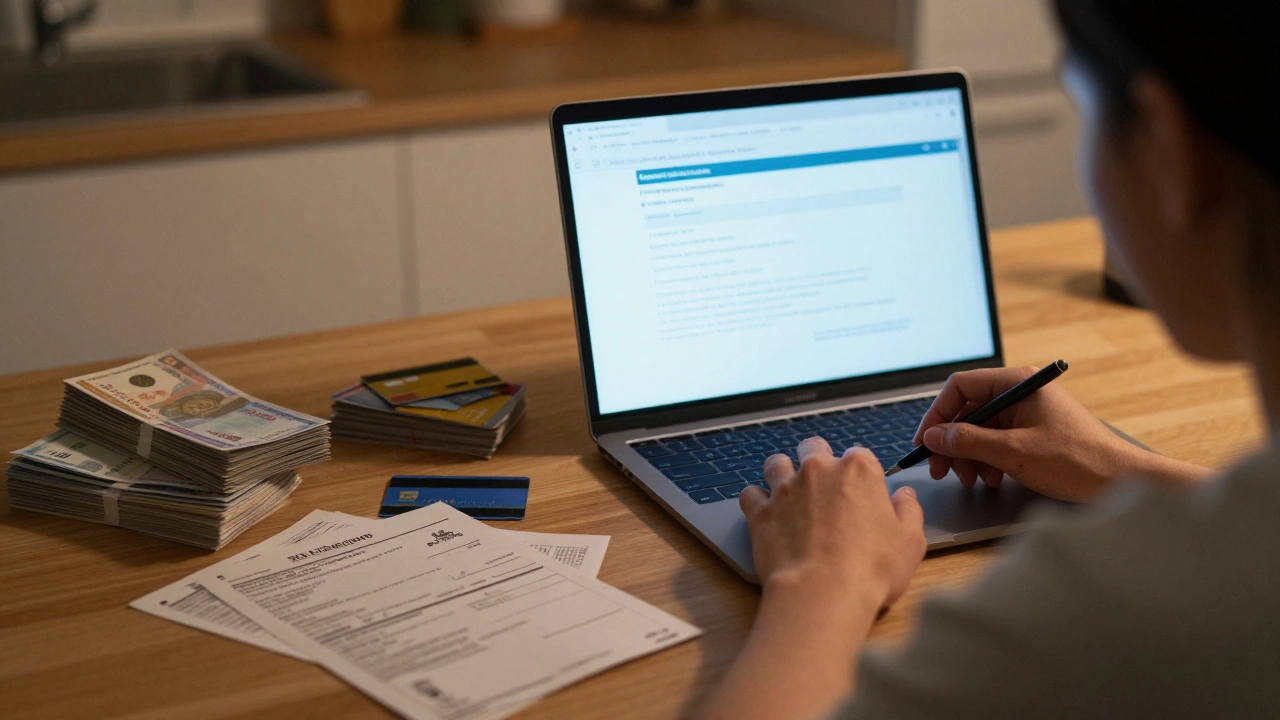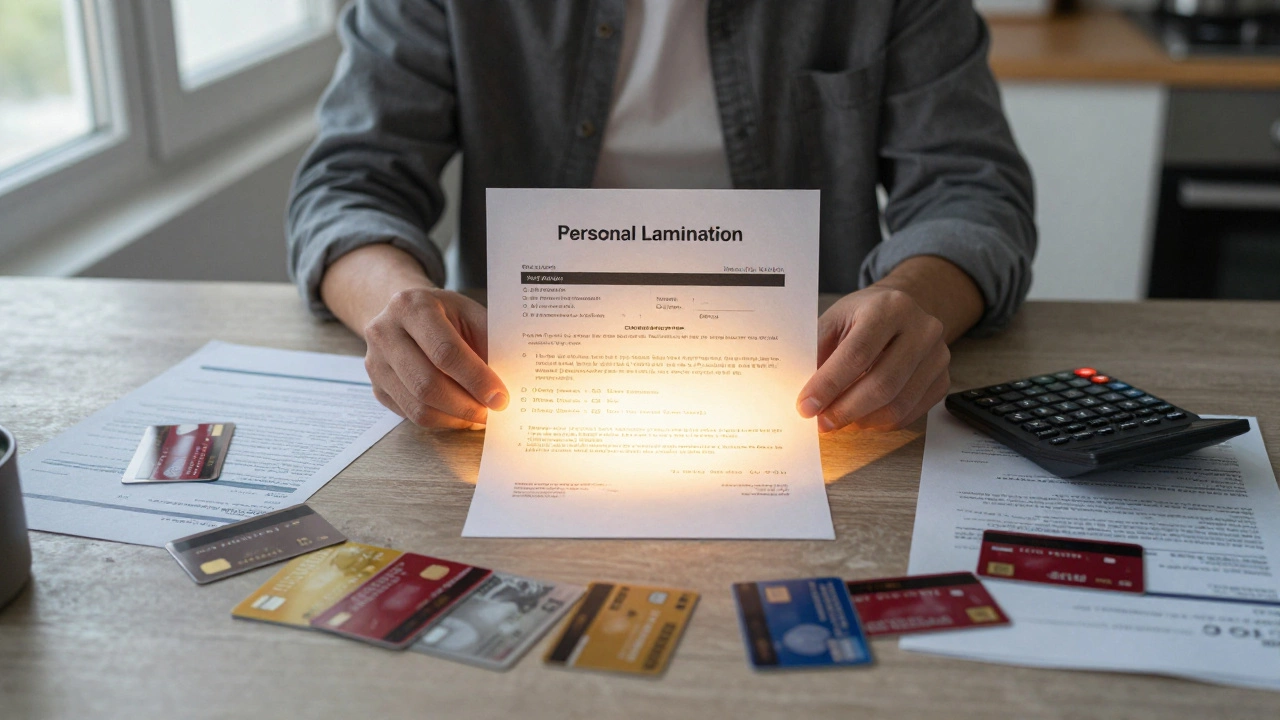Personal loans can feel like a financial lifeline when you're in a pinch, but getting one isn't always a walk in the park. Whether you're looking to consolidate debt or cover an unexpected expense, banks and other lenders need convincing that you're a safe bet. The better you understand what goes into the process, the easier it is to set yourself up for success.
One of the first things lenders will scope out is your credit score. It's like your financial report card, showing how reliable you are when it comes to handling borrowed money. A solid score can make life a whole lot easier, but don't panic if you're not quite there yet. Plenty of folks have improved their numbers with a bit of strategy and patience.
Aside from credit, lenders will dig into your income and employment status. They're basically asking, "Can this person comfortably handle more debt?" They've got their own set of criteria, so it can be worth shopping around to see where you might fit best. And hey, each lender has its quirks—what works for one might not for another.
- Understanding Personal Loan Basics
- Factors Influencing Loan Approval
- Tips for Improving Chances
- Comparing Lenders
Understanding Personal Loan Basics
So, you're thinking about getting a personal loan? Let's break down the nuts and bolts of what you're signing up for. A personal loan is essentially a lump sum of money you borrow and pay back over time, usually with a fixed interest rate. It's a go-to option for many when they need funds for home improvements, weddings, or unexpected expenses.
The biggest draw of a personal loan? Flexibility. You don't need collateral, which means you’re not risking your car or house as with other types of loans. This aspect alone makes them appealing, especially if you're cautious about your assets.
When you borrow, you'll agree to a loan term. This is the amount of time you have to pay back the loan. Common terms range from one to five years. The longer you stretch it, the smaller your monthly payments—but you might end up paying more interest in the long run.
- Loan Amount: How much you need to borrow. Keep it realistic to avoid unnecessary debt.
- Interest Rate: The cost of borrowing, usually fixed, so it doesn’t change over time. Lower is better!
- Repayment Schedule: Monthly payments are the norm. Make sure you budget for them in your expenses.
Personal loans are unsecured, meaning they’re not tied to collateral. Consequently, creditors might offer somewhat higher rates to hedge their risk. But the good news is, there are plenty of competing lenders. A bit of smart shopping can score you a competitive rate.
Curious about stats? Roughly 19.1 million Americans have a personal loan, with an average balance close to $8,000. It's proof that personal loans are a mainstream borrowing choice.
Now that you know the basics, you're already one step closer to understanding if a personal loan aligns with your financial game plan.
Factors Influencing Loan Approval
When it comes to snagging a personal loan, several key factors roll up into the lender's decision-making process. Understanding these can help you prepare and tackle any bumps along the way.
The first, and perhaps most obvious, is the credit score. Lenders use this to get a snapshot of your financial reliability. The higher the score, the more confidence they have in lending you money. Scores generally range from 300 to 850, with anything above 700 usually considered good.
Next up is your credit history. This encompasses everything from your payment habits to the length of your credit accounts. Lenders look for any red flags here, like missed payments or maxed-out cards, which could indicate risk.
Income is another biggie. Lenders need to know you have enough cash flow to cover your loan's monthly payments. They’ll ask about your salary, but they’re also interested in your debt-to-income ratio. This ratio is your monthly debt payments divided by your income and serves as a checkpoint for your financial health. Most lenders prefer this number to be under 36%.
Employment status adds another layer. Steady employment in a stable industry is often a plus, making lenders more comfortable about your ability to repay. If you switch jobs often, it might be worth sticking around for a bit before applying.
Some lenders even take a look at how you intend to use the loan. If it's for something like education or home improvement, that might sit better with a lender than something less tangible.
| Factor | Ideal | Notes |
|---|---|---|
| Credit Score | 700+ | Higher scores generally make approval easier |
| Income | Sufficient to cover loan installments | Check debt-to-income ratio (preferably <36%) |
| Credit History | Clean, with timely payments | Avoid late payments or defaults |
Lastly, don't forget lender-specific requirements which can vary significantly. Some might weigh certain criteria heavier than others, so it's smart to do some homework and compare.

Tips for Improving Chances
So, you're pondering a personal loan and wondering how to increase your odds of getting approved. You're in good company because many folks are trying to do the same. Here's the scoop on making yourself a more appealing candidate to lenders.
First off, get friendly with your credit score. It plays a starring role in loan approvals. Many lenders look for scores above 600, but the higher, the better. Pull your credit report (you can get one free annually from each of the three major credit bureaus) and check for errors. Sometimes, a slip-up on your report is all that's holding you back. Fixing inaccuracies can give you a quick boost.
Once you've nailed down a clean report, work on paying down outstanding debts. Credit card balances can weigh heavily on your score, so tackle those head-on. Consider the snowball or avalanche method to chip away at your debts systematically.
Next up, think about your income situation. Stable employment with a fair income reassures lenders of your ability to repay a loan. If you're on the job hunt or considering a side gig, that extra cash could strengthen your application by improving your debt-to-income ratio.
It doesn't hurt to build relationships with potential lenders, either. Visit local banks or credit unions, and chat with them about their products. They may provide advice specific to your situation, or you'd find opportunities to negotiate terms a bit more favorably in person.
Lastly, don't be shy about shopping around. Each lender has its own criteria, and some might be more lenient on certain aspects than others. Use tools like online loan marketplaces to compare offers without dinging your credit score. When you're ready, submit your applications within a short timespan (like two weeks), so they count as a single inquiry on your report.
- Review and fix credit report errors.
- Pay down existing debts strategically.
- Maintain a stable job and income.
- Build relationships with potential lenders.
- Shop around and compare offers.
Navigating the world of loan approval doesn't have to be daunting. With some targeted actions, you’ll be better positioned to secure the funds you need.
Comparing Lenders
In the world of personal loans, not all lenders are created equal. The options might seem dizzying, but taking a closer look can help you find a lender that really fits your needs. Here's a breakdown of what to watch for when you're shopping around.
First off, pay attention to the interest rates. They have a big impact on how much you'll fork over in the end, so compare them like your future depends on it—because financially, it does. Remember, even a small difference in percentages can add up over time.
Fees also play a sneaky role in what you’ll actually pay. Some lenders wave around terms like "no upfront fees," which sounds great until you hit with charges hidden in the small print. Look for things like origination fees, prepayment penalties, or late fees. No one likes surprises in their wallet!
Customer service is another important factor. Sure, a rock-bottom interest rate is appealing, but if a lender is hard to reach or not helpful when issues pop up, that could lead to major headaches down the line. Ask around or check reviews to see what other folks' experiences have been.
Here's a quick list to keep handy when you compare:
- Interest rates: Look at both fixed and variable options.
- Fees: Check for any potential add-ons.
- Repayment terms: Ensure they're flexible enough for your lifestyle.
- Customer service: Is support easily accessible if you have questions?
Finally, use online comparison tools. They make it easier to sort through options without breaking a sweat. Enter details like your desired loan amount and repayment term, and let the tool do the hard work. It’s like window shopping for loans from your couch.









